Indian policy and strategic establishment is exhibiting little or no concern about growing Pakistani nuclear arsenal, this is despite the fact that Pakistan is touted to have more nuclear weapons than UK and has emerged as the fifth largest nuclear weapon state behind, USA, Russia, China and France. Islamabad is estimated to be increasing the production of its fissile material by coming on stream of plutonium enrichment facilities at Khushab II and in few years Khushab III where the work appears to have been stepped up enabling Pakistan to add nearly 25 additional kilograms of weapon grade plutonium every year starting 2012-13. According to knowledgeable western sources Pakistan today has a stockpile of anywhere between 90 - 110 or even more weapons.
Pakistan has also stepped up production of its delivery vehicles and introduced a new element in the sub continental strategic equations by introducing nuclear capable tactical missile Nasr, presumably going by Pakistani assertions, to counter India’s pre emptive offensive doctrine. The operational deployment of this missile appears to have been tested during Pakistani Exercise Azam – e – Nau conducted in May this year. Pakistan has also upgraded its missile production capability at Chinese aided National Development Complex located near Fatehjang approximately 50Kms South West of Islamabad in Kala Chatta Mountains. Its production rates have since been enhanced with ability to produce around 12 missiles per year of Ghazni and Shaeen I and II categories.
It is obvious that Pakistan is both qualitatively and quantitatively is upgrading its strategic forces, as deterrence against India’s growing conventional capabilities. It is equally important to highlight that as Pakistan’s technological capabilities rise, aided and abetted by China and others; it is increasingly likely to move into zone of competitive advantage. In this regard two more developments merit mention. One operationalising Nasr indicates miniaturization of warheads, which inter alia would also mean Pakistani land attack and air attack cruise missiles BABUR and RAAD could also become nuclear capable. Second with navigation and enhanced surveillance inputs available from Chinese space based systems Pakistan could gradually shift to ‘launch on warning’ (LOW) mode giving it a much more potent first strike capability but in the bargain muddying the stability and instability paradigm in the subcontinent forcing both countries to upgrade their state of readiness and increasing risk of accidental launches. This is a dangerous development given the fact that there exists within Pakistani nuclear establishment certain degree of over confidence on its nuclear capabilities and ability to leverage its doctrinal ambiguity to hold India to ransom through unabated proxy war.
Pakistan’s Doctrinal Perspective
This brings us to the question what is Pakistani doctrinal thinking and what are its drivers. First and foremost there should be no doubt that Pakistani nuclear arsenal is entirely India specific. Pakistani leadership has articulated on scores of occasions that they will be forced to use nuclear weapons in case its numerous thresholds in terms of space, military, economic and national survival are threatened. Underlying message Pakistan will not hesitate to retaliate with nuclear weapons in adverse operational circumstances that impact its core national interests in terms of defined thresholds being breached.
This connotation is important to understand as it directly impacts the stability paradigm. Essentially what flows from above is that Pakistan is articulating that there is no space for limited war or in the backdrop of India’s growing conventional capabilities it did undertake such operations it will have no hesitation in using nuclear weapons.
Flowing from above Pakistan looks at its nuclear capability both in terms of political deterrence i.e. deter India from responding to 26/11 type scenarios but its military leadership is equally clear that it will not hesitate to use nuclear weapons against India were it to launch a pre emptive offensive against Pakistan as a sequel to a major terrorist attack to which India holds Pakistan culpable.
Pakistani doctrinal thinking appears to be flowing from NATO’s Cold War nuclear doctrine wherein faced with overwhelming odds of former Soviet Union’s conventional forces, NATO commanders were willing to retaliate even before soviet forces had crossed the Fulda Gap with tactical nuclear weapons in clear indication of very low thresholds.
Pakistani thinking further appears to be attenuated by several factors in the backdrop of Indian pre emptive response strategy;
- Worried that lack of conventional or in adequate response would allow India to make sizeable gains and validate belief that there is a space for limited war under nuclear overhang.
- Above could lead to horizontal or vertical escalation that could put Pakistan in a position of operational disadvantage given India's growing conventional edge and war waging capabilities, backed by improvement in technological capabilities.
- It appears their military centric planners perceive face Hobson's choice; faced with inadequate conventional response; there is no option but to use nuclear weapons early.
Based on the foregoing analysis Pakistan is attempting to exhibit the same logic as NATO during Cold War of both low thresholds and ambiguity to dissuade India from launching pre emptive strikes following a particularly damaging terrorist strike putting Indian political establishment in a quandary. Aim of Pakistani establishment is to contract the space for conventional war and in a sense degenerate India’s ‘Limited War’ doctrine, which claims availability of such a space. Pakistan’s belief that it can leverage its growing strategic capabilities to prevent Indian escalation are strengthened by Indian lackadaisical response following 26/11 and now 13/7 terrorist strikes, in both cases India appears to have self deterred itself
What is driving Pakistan’s push for nuclear race in Sub Continent?
To achieve its objectives Pakistan is following two concurrent paths. Its enhancement of nuclear capability and developing across the board weapon delivery capability that includes missiles and cruise missiles as primary vectors although it presently lacks the sea leg of Triad is aimed at developing a credible first strike capability backed by second strike capability. Credible first strike capability gives Pakistan flexible response options ranging from demonstration strikes, limited use to massive first strike. The credible and survivable second strike capability is seen as insurance against India’s massive retaliatory strike doctrine. Message being that enough will survive even if India was to launch a devastating counter value (against cities and other important centers) second strike, as part of its ‘No First Use’ doctrine. In a sense it is Pakistan’s attempt to bring nuclear weapons within the lexicon of Indo – Pak conflict albeit at lower rungs of escalation and forcing on Indian leadership graduated response paradigm as part of its war termination strategy.
Second perspective of this thinking is nuanced leaks about their threshold thinking. According to literature put out on the net, Pakistan has now articulated four different levels of thresholds;
- Pre- emptive Response Threshold. Pre-mediated, pre-emptive use of nuclear weapons against mobilizing Indian forces for what Pak calls an ‘incautious’ attack. Also included within the ambit are attempts at strategic coercion through cyber, information and other key point strikes termed as ‘no contact warfare’. The weapons could be used on counter force (Indian territory) or counter value targets.
- Early Response Threshold. Against Indian forces entering Pak territory, wherein Pak taken by surprise or in sectors considered sacrosanct, decides to use nuclear weapons to stem the tide of Indian offensives. Here the important aspect will be relationship between threat to Pakistan’s high value objectives and relative conventional balance.
- Delayed Response Threshold. Following major gains made by India following saturation of conventional options, leading to major threat to its heartland, could induce nuclear response. It is important to highlight that this stage will be pre empted by high degree of signaling and brinkmanship, including physical deployments.
- Accumulated Response Threshold. This scenario could come about following saturation of conventional options, and serious degeneration of its war waging potential putting the national well being at risk. This appears to be at worst case scenario that could invoke massive nuclear retaliation in a loose all situations. This too will be followed by high degree of signaling and brinkmanship.
Essentially what flows from above discourse is that there is a change in thinking dictated by the increasing asymmetry in size of the arsenal (100 – 130, relation to India’s 60-90) and assured second strike capability. It should be apparent that in any future conflict scenario Pakistan is likely to resort to greater degree of brinkmanship and posturing including pre – emptive deployments. However despite all its posturing Pakistan will be hard put to take unilateral pre emptive response decision given the consequences of Indian retaliation. Second choice of sector and speed of response will to a large extent degrade Pakistani options. It could hardly be expected to launch tactical nuclear weapons over Indian forces in its own territory if Indian forces have penetrated the heartland. Second there is an urgent need for India to upgrade its intelligence, surveillance and reconnaissance capabilities for enhanced transparency and picking up any Pakistani movements.
Equally the nature of our response, timing and objectives will become critical. Lastly there is a case for Indian nuclear establishment in the backdrop of Pakistan acquiring Nasr to correlate strategic weapons mobilisation concurrent with its conventional mobilisation. No doubt this will be deemed as dangerous escalations so will tactical deployment of Nasr. The issue is not to get self deterred by Pakistani nuclear posturing or irrational capability development but deal with it through resolve and capacity upgradation and enhancement, certainly not nuclear arms race.
----------------------------------------------
Published Date: 1st September, 2011



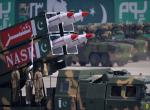
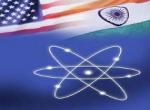
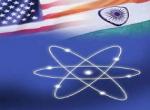
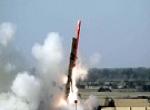
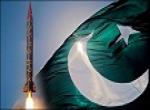
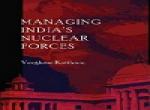
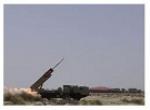
Post new comment